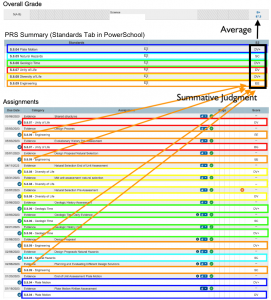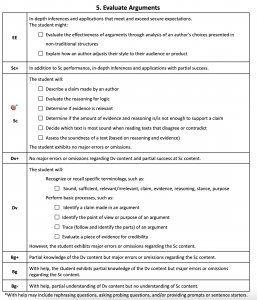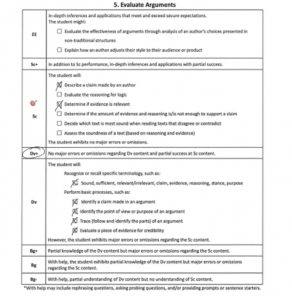A Standards-Referenced Report (SRR) is slightly different than a Standards-Based Report. Standards-Referenced Reports combine aspects of a Standards-Based system with traditional grades to create a complete look at how your student is progressing toward curricular standards in each class. A Standards-Referenced Grade Report is now used by all Waukee CSD 8th and 9th-grade teachers. Once student begin 10th grade, assessments are done solely on a points-based system.
Why is Waukee using Standards-Reference Reporting at the 8/9 Level?
Giving only a final letter grade doesn’t adequately explain how a student has excelled or where they need to improve.
The benefits of SRR include:
- Consistency in reporting processes amongst all 8/9 classrooms.
- All teachers of the same course will report on the same content.
- Guarantees the alignment of grades to district and state standards.
- Clarity of learning expectations and proficiency levels for each course.
SRR is part of the High-Reliability Schools (HRS) framework. HRS is a research-based framework that provides structure and measurements of success for school improvement that allows every student to achieve their highest potential.
How is an Overall Grade Calculated?
- Each course has designated progress report statements (PRS).
- Each PRS will be given a proficiency level (EE, SC+, SC, DV+, DV, BG+, BG, BG-) based on student performance. Teachers use a proficiency scale to determine a proficiency level.
- All PRS for a course are averaged together to produce the overall letter grade through a conversion scale.
How Can Students Get an A+
Overall grades are determined by the scale below. Students who work consistently at the EE and SC+ levels of proficiency will calculate to an A+ for the overall grade. This also produces 4.33 grade points on a 4.0 scale. Students who receive an A will gain 4.0 grade points on a 4.0 scale (the top of the scale).
As an example:
| Progress Report Statement | Proficiency Level | Calculating % |
| PRS #1 | EE | 100 |
| PRS #2 | SC+ | 97 |
| PRS #3 | SC+ | 97 |
| PRS #4 | SC+ | 97 |
| PRS #5 | EE | 100 |
| Average = 98.2% |




